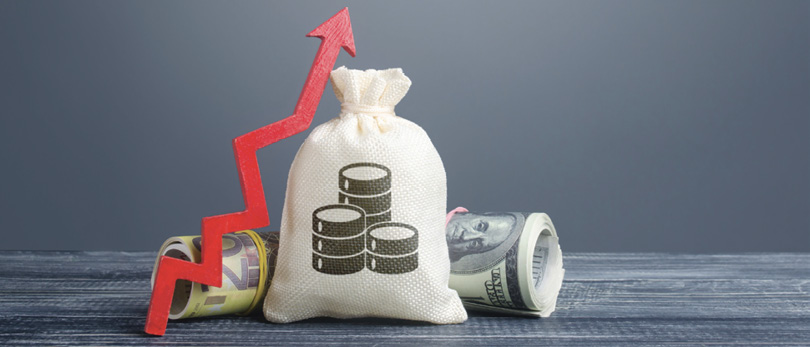By Pat Zaby, CRS
I have been teaching this course for REALTORS® since 1993, and even though it has been consistently refreshed to keep all pertinent tax information up to date, the basic premise is as sound today as it was two decades ago.
 REALTORS® who are looking to make a good investment should consider purchasing real estate. It makes sense to invest your money in something about which you have detailed knowledge and over which you can exert some control. Investing in companies through the stock market means you are relying on other people’s decisions about whether or not you’ll make money. In addition, as a REALTOR®, you can make your investment purchase at a discount. Even better, you can see the best opportunities, sometimes even before they’re listed.
REALTORS® who are looking to make a good investment should consider purchasing real estate. It makes sense to invest your money in something about which you have detailed knowledge and over which you can exert some control. Investing in companies through the stock market means you are relying on other people’s decisions about whether or not you’ll make money. In addition, as a REALTOR®, you can make your investment purchase at a discount. Even better, you can see the best opportunities, sometimes even before they’re listed.
Real estate has been called an “ideal” investment, which sounds like it is describing the perfect investment. In this case though, “IDEAL” is used as an acronym to explain why rentals are such a good investment.
Income. Rental real estate generates income when the rent is more than the expenses, and there is a positive cash flow. Income on a stock is one that pays a dividend. The interest earned on a savings account is income. However, many investments don’t have income and the investor must wait to sell the investment to realize the profit. With a 20%–25% down payment, coupled with the low interest rates on mortgages and high rental rates, rental investments regularly have a positive cash flow.
Depreciation is a tax benefit that is strictly for rental real estate, and it’s one of the few tax shelters that are still part of the IRS tax code. It is a non-cash deduction from taxable income for wear and tear on assets.
Equity buildup results from the amortization of the mortgage. The P&I payment pays the interest due plus an amount to retire the principal of the loan. Each payment applies less toward interest each month and more toward principal. As an example, I have a rental property purchased with a 15-year loan that I’ve owned for about 11 years. The total payment on the property is $2,300, but last month $1,100 of the payment was principal reduction on the loan. That is like an additional cash flow. It didn’t go into my savings account and it’s not as liquid as cash, but it’s still part of my increased equity.
Appreciation. Most real estate properties go up in value over time. During short periods of time, however, home values can fluctuate and even decrease, for example, due to natural disasters, economic events such as changes in interest rates or when a housing bubble bursts as it did in 2009. The properties we’re concerned with are primarily owner-occupied residences in areas with good resale. On a national basis, according to National Association of REALTORS®, annual price growth over the last 10 years has been 6.4%. In the last five years, it has grown at 7.3% annually. Research is readily available to see what kind of appreciation a specific property has received, and based on supply and demand, an investor makes a determination on what can be reasonably expected.
Leverage. When borrowed funds are used to control an investment, it can actually increase the yield. A simple example would be the purchase of a property for $100,000 cash. If you rented out the property, paid the expenses and had $10,000 left, it would generate a 10% return ($10,000/$100,000).
If you put an $80,000 mortgage on the property at 5%, you’d owe $4,000 in interest and would only have $6,000 left. However, you now only have $20,000 in cash in the property and the yield would increase to 30% ($6,000/$20,000). The use of borrowed funds, called leverage, increases the yield.
There is another investment characteristic that is not addressed in the IDEAL formula, and that is risk: the uncertainty of knowing the outcome of an investment. Any careful investor will compare available alternatives and weigh them with their personal knowledge of each, since familiarity can help lessen the risk.
Having your money in a savings account is guaranteed by the Federal Deposit Insurance Corporation (FDIC). There is very little risk, but there is also not much reward. Today’s rates are between 0.35% and 0.5%. The next option might be a 10-year Treasury bond that pays 1.55%. The concern might be committing your money for 10 years at a rate less than anticipated inflation.
The stock market might be an alternative that looks good, especially in light of the new record highs, but many people can’t handle the volatility and may not have the expertise to understand all of the nuances that could make or break their investment.
Since homeowners are familiar with the operation of a home and its related components, like insurance, taxes, maintenance and other things, operating a rental home is not a far stretch. Similarly, since a typical residential agent’s business is owner-occupied homes, and it is these same homes that are being used as rentals, the agent’s understanding of rentals should be greater than for many other types of investments.
Agents can share their knowledge and experience with potential investors while also investing for their own accounts. They benefit in several ways: Clients will usually buy additional properties once they start making money, and they have a tendency to tell their friends about the real estate professional who helped them with their investments.
It is easy to understand why so many people think rentals are the IDEAL investment.
Pat Zaby, CRS, received his CRS Designation in 1977. He can be reached at Pat@PatZaby.com or 214-850-7308.
Photo: Andrii Yalanskyi








